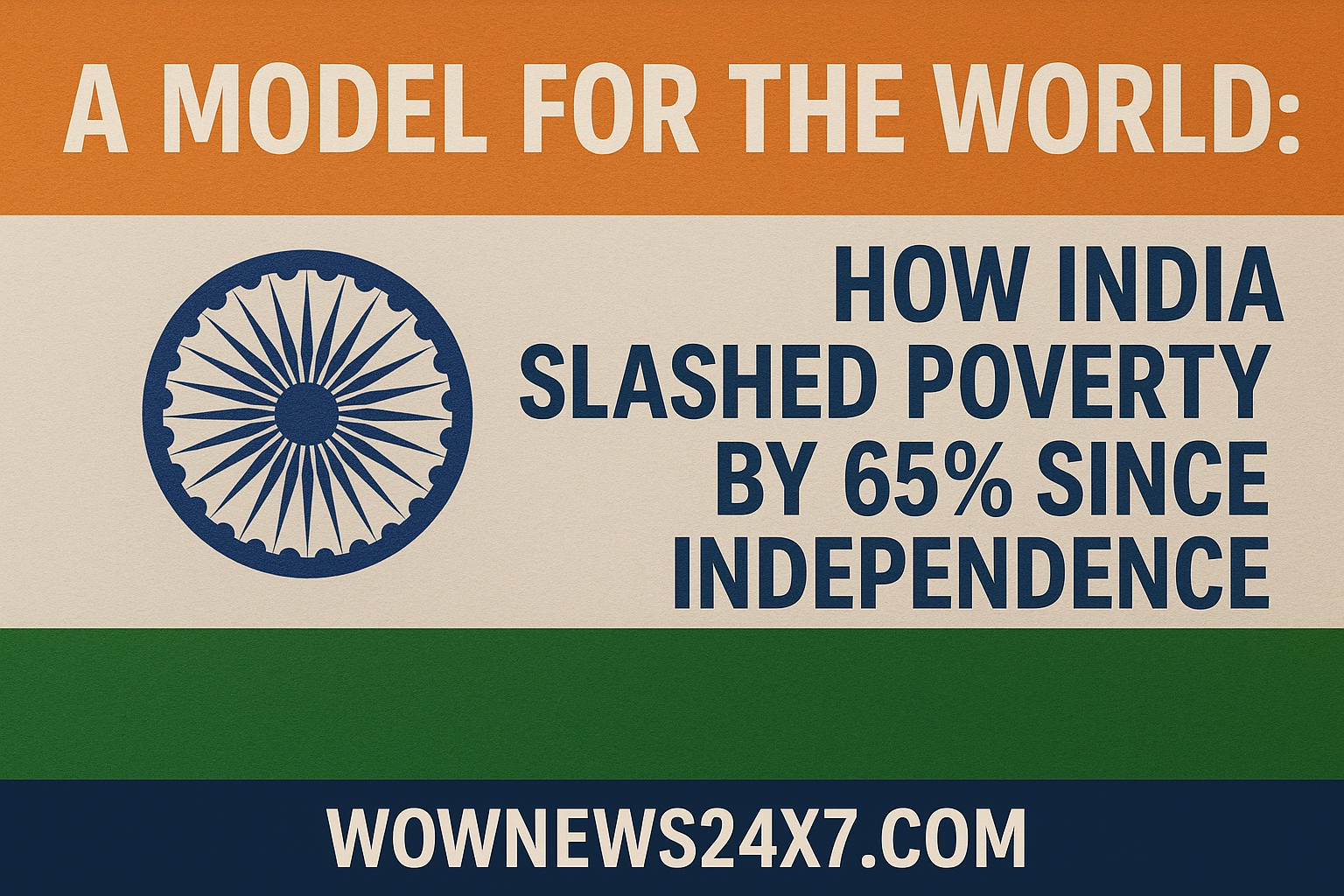India has witnessed a dramatic reduction in poverty—from over 70% at Independence to around 5% in 2025. This transformation stems from decades of reforms, targeted welfare schemes, and economic growth. From land reforms to digital inclusion, the journey reflects India’s evolving commitment to equity, resilience, and inclusive development.
India’s post-Independence journey in poverty alleviation stands as one of the most significant socio-economic transformations globally. According to recent data, the country has reduced its poverty rate from over 70% in 1947 to approximately 5% in 2025, marking a historic milestone in inclusive development. This progress is the result of sustained policy interventions, economic reforms, and targeted welfare programs.
Major Takeaways:
Early Reforms (1950s–1970s):
-
Land reforms and the Green Revolution improved agricultural productivity and rural incomes.
-
Expansion of public distribution systems and rural employment schemes laid the foundation for poverty reduction.
Economic Liberalization (1991 onwards):
-
The 1991 reforms opened India’s economy, boosting growth and job creation.
-
Private sector participation and foreign investment accelerated infrastructure and industrial development.
Targeted Welfare Schemes (2000s–2020s):
-
Programs like MNREGA, PMAY, Jan Dhan Yojana, and Ayushman Bharat directly addressed income, housing, banking access, and healthcare.
-
Direct Benefit Transfers (DBT) and Aadhaar-linked subsidies improved delivery efficiency.
Digital and Financial Inclusion:
-
Over 500 million bank accounts opened under Jan Dhan Yojana.
-
UPI and mobile banking enabled financial access for rural and low-income populations.
Recent Progress (2020–2025):
-
Post-pandemic recovery was supported by PM Garib Kalyan Yojana, free ration schemes, and rural employment boosts.
-
India’s Gini Index of 25.5 places it among the most equal countries globally.
Global Recognition:
India’s poverty headcount ratio at $3.65/day PPP has dropped below 5%, according to Statista estimates.
The country is now cited as a model for scalable poverty reduction in developing economies.
📌 Notable Updates:
-
The government is now focusing on multidimensional poverty, including education, sanitation, and nutrition.
-
India aims to eradicate extreme poverty entirely by 2030, aligning with UN Sustainable Development Goals.
-
India’s poverty reduction journey reflects not just economic growth, but a deepening commitment to equity, dignity, and opportunity for all.
Sources: 1. India TV News – Poverty Reduction Explainer 2. PIB – India’s Gini Index Report 3. Statista – Poverty and Inequality in India

